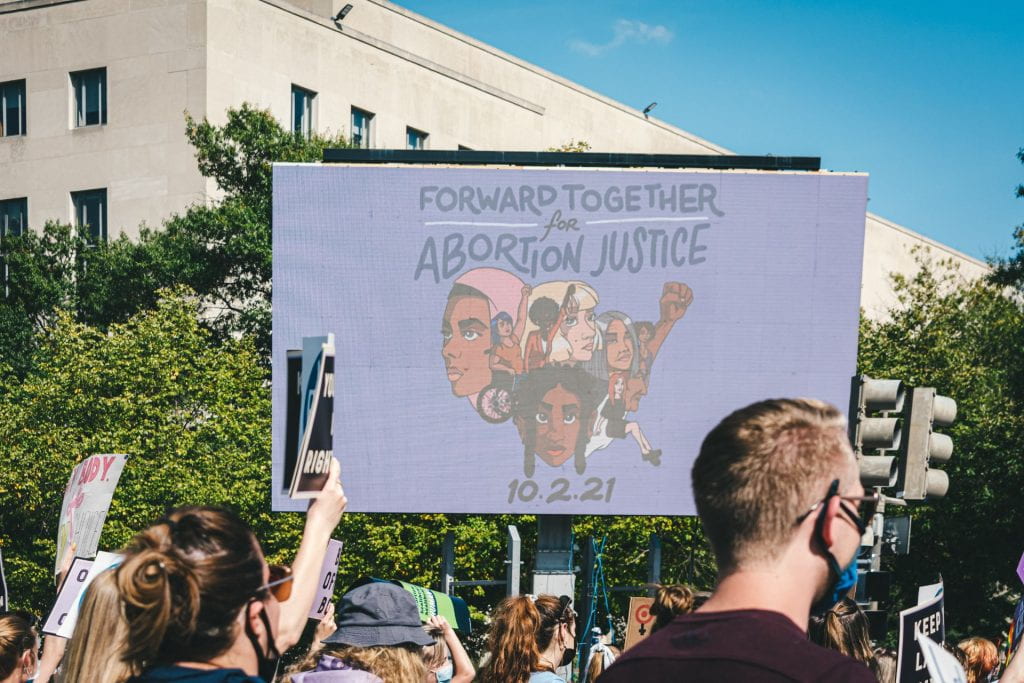The Texas Abortion Law, signed into law on May 19th, 2021, went into effect earlier this September, effectively banning abortions after the detection of fetal heartbeat. This law makes no exceptions even for victims of rape or incest.
Previous abortion bills introduced the state government and authorities to enforce abortion laws, but unlike anything seen before, Texas’s law awards the power to the citizens. Any private citizen in the country now has every right to sue anyone they suspect has had an abortion, took part in helping with an abortion, or in any way assisted an individual seeking an abortion in Texas. If the suit succeeds, the citizen will receive monetary compensation of at least $10,000. The intricacies of this law make it difficult to legally interpret since technically, abortion has not been criminalized.
History of the Heartbeat Bill
In 1973, the landmark Supreme Court case Roe vs. Wade federally legalized abortion in the first two trimesters of pregnancy but allowed states to ban abortion in the 3rd trimester. Since then, several state legislatures have passed so-called “heartbeat bills,” which criminalize abortions after fetal cardiac activity has been detected—usually at 6 weeks. However, this is only a flutter of electricity, and the heart forms only after 17-18 weeks. Most individuals do not even know that they are pregnant at this point, because birth control, other forms of contraception, or not tracking menstrual cycles can mask pregnancies until the 8th week.
Up until now, the Supreme Court has adamantly upheld Roe vs Wade, and every state abortion ban signed into law has been struck down in federal courts. In a historic decision, the United States Supreme Court ruled to let Texas temporarily implement its Abortion Law Although the decision was made in consideration of the difficulty interpreting the law by the Constitution, the hesitancy has been raising alarms all over the country.
During the Former President’s term, 2 conservative justices replaced the deceased Supreme Court Justices Ruth Bader Ginsburg and Antonin Scalia—tipping the balance of opinion from liberal to conservative. The new Supreme Court, with the power to influence landmark judicial decisions and history for the next century has many human rights and women’s rights activists seeing it as a threat to the well-being of the country. Reversing all or part of Roe vs. Wade will start an ethical slippery slope that some fear could lead to restrictions on contraception and women’s health services.

Abortion as a Human Right
The United Nations affirms that access to safe and legal abortions is a fundamental human right. It is not only crucial to ending discrimination against women but also to protect women’s health. The United Nations Human Rights Committee (UNHR) states that restriction abortion bans violate basic “right[s] to health, privacy, and in certain cases, the right to be free from cruel, inhumane and degrading treatment.”
Despite the common misconception that abortion restrictions reduce abortions, they only increase unsafe abortions. Women and young girls use dangerous methods such as toxic chemicals, bodily harm, and relying on unlicensed abortion providers in their desperation to terminate a pregnancy. In fact, in the United States, the American College of Obstetricians and Gynecologists (ACOG) found that over 1.2 million women had unsafe abortions which resulted in nearly 5000 deaths, not including tens of thousands more left with long-term injuries and complications.

Women in Texas Now
The state has clearly indicated that the law is “not against women” but against abortion providers who are breaking the law.
Already, women in Texas are traveling out to liberal states such as California or New York to get their abortions. The influx of cases has overburdened providers in other states, but even still, those who make it out of state to receive an abortion at least have the option. The majority of women, however, do not have the means or funds to obtain an abortion in another state, so they turn to abortion pills to self-induce abortions. This method has its own problems. The pills can get stuck in customs anywhere from 2 to 30 days which adds to the anxiety of pregnant individuals, because the pills must be taken before 10 weeks of gestation to avoid life-threatening complications such as massive hemorrhaging.
Political Reaction
The Texas Abortion Ban symbolizes the modern bodily autonomy movement on a precipice. Based on the Supreme Court’s current balance, it is possible that Roe vs. Wade could be struck down within the next two years. One thing must be made clear though: overturning Roe vs. Wade means that abortion will only become illegal within states that have chosen to do so—not across the country.
However, another aspect to consider about the abortion rights debate is voice. Women and minorities are more empowered than four decades earlier and have the platform to fight for their beliefs. In fact, 77% of people want the Supreme Court to uphold Roe vs. Wade. If Roe vs. Wade is overturned, an unprecedented amount of public outcry will occur in every state to fight, once again, for the right to bodily autonomy that women have fought for decades.

Future
Later this year, the Federal Courts will hear Mississippi’s case to let their heartbeat law stand for 15 weeks. More conservative states will likely use Texas’s law to support their legislations. Thus, the outcome of these hearings will give the country an understanding of how the federal judicial system will respond to future abortion and women’s health legislation.
The Supreme Court’s ability to protect abortion rights is being tested, but according to the Los Angeles Times Editorial Board, the responsibility may be passed to Congress instead of staying with the courts.
In the Senate and House of Representatives sits a bill titled the Women’s Health Protection Act, which could provide universal abortion rights and remove the damaging restrictions women are subjected to for abortions. One of the goals of women’s rights activists is to see this bill passed in Congress, and the time has come for Congress and the Executive Branch to collaborate and alleviate any detrimental decision that the judicial system may make. The public can help with this goal by proactively voting for legislators that will turn bills into reality and supporting many nonprofit organizations and charities such as NARAL Pro-Choice American and Planned Parenthood through volunteer work or donations.

